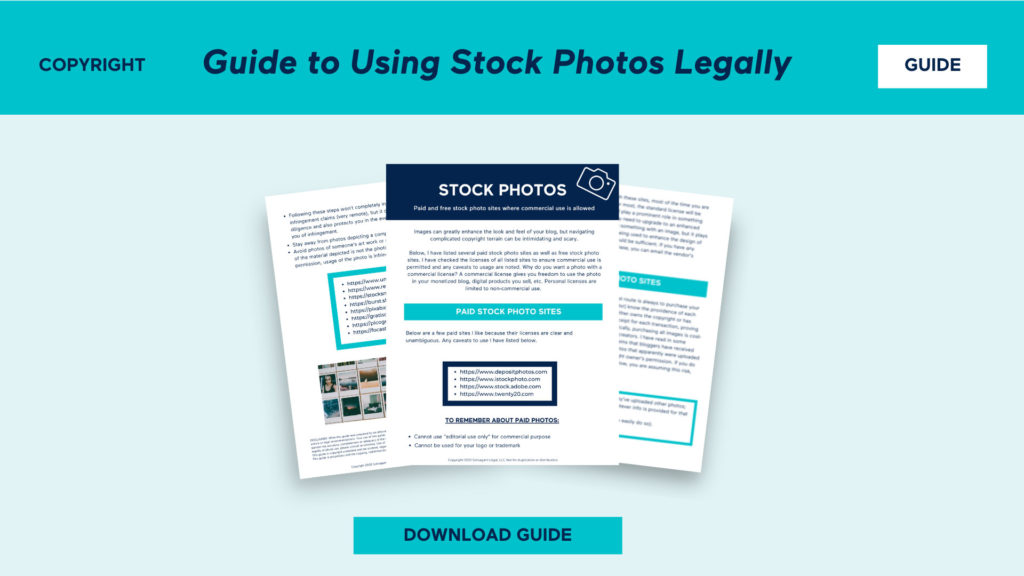Alamy Stock Photos is a treasure trove for creatives looking to enhance their projects with high-quality images. Founded in 1999, it boasts millions of images spanning diverse categories, from stunning landscapes to vibrant lifestyle shots. What sets Alamy apart is its commitment to providing authentic, diverse content, perfect for any purpose, whether it’s for marketing, websites, or personal use. In this guide, we'll explore how to legally use
Why Use Stock Photos for Your Projects?

Using stock photos, especially from a reputable source like Alamy, offers a plethora of benefits for your projects. Here’s why you should consider incorporating them:
- Cost-Effectiveness: Hiring a photographer or organizing a photoshoot can be expensive. Stock photos provide a budget-friendly alternative, allowing you to access a wide range of images without breaking the bank.
- Time-Saving: Searching for the perfect image can be time-consuming. With platforms like Alamy, you can quickly find images that fit your needs, allowing you to focus on what really matters—creating your project.
- Diversity of Content: Alamy boasts a vast library of over 200 million images. Whether you need something whimsical, professional, or artistic, you’re likely to find it here. It’s like having a global team of photographers at your fingertips!
- High Quality: Alamy ensures that their images meet high standards of quality. You can trust that the photos you choose will look great in print or digital formats.
- Flexibility: Stock photos can be used across various mediums—from blogs and websites to social media and print materials—offering you flexibility in how you present your brand or message.
Moreover, using stock photos can also enhance your storytelling. A well-chosen image can evoke emotion, convey messages, and establish a connection with your audience. For example, if you’re a travel blogger, using stunning scenic images can transport your readers to exotic locations, enhancing their reading experience.
Additionally, Alamy's licensing options allow for wide-ranging uses, from commercial to editorial, which means you can find images that meet both your legal and creative needs. Instead of worrying about copyright issues, you can focus on crafting your message and engaging with your audience.
In summary, leveraging stock photos from Alamy not only saves time and money but also enriches your projects with high-quality, diverse visuals that resonate with your audience. So, let’s take a closer look at how to navigate Alamy and use their images legally in the next sections!
Also Read This: What Happened to King Alami
3. Understanding Licensing Types on Alamy

When diving into the world of stock photography, understanding licensing types is crucial. Alamy offers a variety of licensing options to fit different needs, whether you’re a blogger, a marketer, or a business owner. Here’s a breakdown of the main types:
- Royalty-Free (RF): This is the most common licensing option. Once you purchase an RF image, you can use it in various projects without paying additional fees. However, the image may still be available to others, so it's not exclusive.
- Rights Managed (RM): This type of license is more restrictive. You pay based on how you intend to use the image, such as the medium (print, digital), duration, and geographical location. The more specific your usage, the higher the cost, but it also provides exclusivity for your defined usage.
- Extended License: For those who need more flexibility, an extended license allows for greater use, including merchandise, templates, and more. It’s perfect for businesses that want to incorporate stock images into their products.
Each licensing type caters to different needs, so it’s essential to understand what you’re purchasing. Always read the license terms carefully to avoid any surprises later on!
Also Read This: How to Sell Images on Alamy: A Comprehensive Guide for Beginners
4. How to Properly Credit Alamy Stock Photos
Credit may not be mandatory for all Alamy images, especially when you buy a license, but giving credit where it’s due is a good practice and encourages photographers. Here’s how to do it right:
First, check the specific licensing agreement for the image you’re using on Alamy. Some licenses might include a requirement for attribution, while others may not. If attribution is required, follow these simple steps:
- Include the Photographer's Name: Always credit the photographer. For example, you can write: "Photo by [Photographer's Name] on Alamy."
- Link to the Image or Alamy: Whenever possible, hyperlink the text to the image or to Alamy’s website. This not only gives proper credit but also directs traffic back to the platform.
Here’s an example of a proper credit line:
“Image by Jane Doe on Alamy”
If you’re using images on social media, a simple tag in your post can suffice. For instance:
“Check out this stunning image! Photo by @JaneDoe on Alamy.”
Remember, proper attribution reflects well on you and helps support the creative community. Plus, it’s a fantastic way to engage with photographers and build connections!
Also Read This: Visualizing Air Traffic Lanes Across the USA Through Images
5. Common Mistakes to Avoid When Using Alamy Images
When diving into the world of stock photography, especially with a platform as vast as Alamy, it's essential to navigate carefully. Mistakes can lead to legal issues or wasted resources. Here are some common pitfalls to watch out for:
- Ignoring License Types: Alamy offers various licenses for its images. Each license comes with different usage rights. It's crucial to read and understand these types thoroughly. For instance, using an image licensed for editorial use in a commercial project can lead to serious consequences.
- Not Checking Image Quality: While Alamy provides high-quality images, it’s essential to ensure the resolution is suitable for your project. A low-resolution image might look fine on a screen but could appear pixelated in print.
- Overlooking Model or Property Releases: If your project features people or private properties, ensure the relevant releases accompany the images. Without these, you could face legal challenges, especially if the image is used commercially.
- Failing to Attribute Properly: While many Alamy images don’t require attribution, some do. Always check the image details. Incorrect attribution could lead to claims of copyright infringement.
- Using Images Beyond License Limits: Each license has specific limitations on how and where the image can be used. Be mindful of these and avoid repurposing images without checking the license terms again.
By steering clear of these common mistakes, you can ensure your experience with Alamy is smooth and stress-free. Remember, knowledge is power, and being proactive will save you time and potential legal headaches down the line!
6. Best Practices for Legal Use of Stock Photos
Now that you’re aware of the common traps, let’s shift our focus to best practices. Proper usage not only keeps you legally safe but also enhances the professionalism of your projects. Here’s how to use Alamy images effectively:
- Choose the Right License: Always start by selecting the license that fits your intended use. For instance, if you’re creating promotional material, opt for a commercial license. If it’s for a blog post or news article, an editorial license might suffice.
- Document Your Usage: Keep records of which images you’ve purchased and their respective licenses. This comes in handy if questions about usage arise later. Maintaining a spreadsheet with image names, dates of purchase, and license types can streamline this process.
- Stay Updated on Terms: Alamy may update its licensing terms or policies. Regularly check for any changes that could affect your usage to ensure you're compliant at all times.
- Educate Your Team: If you’re part of a larger organization, ensure that everyone understands how to use Alamy images correctly. Conduct training sessions or share guidelines to foster a culture of compliance.
- Use Watermark-Free Images: Always download images without watermarks for any published materials. Watermarked images can detract from the professionalism of your content and could lead to confusion over image rights.
By applying these best practices, you’ll not only protect yourself legally but also enhance the quality and impact of your visual content. Stock photography can be a powerful tool when used correctly, so make the most of it!
 admin
admin








